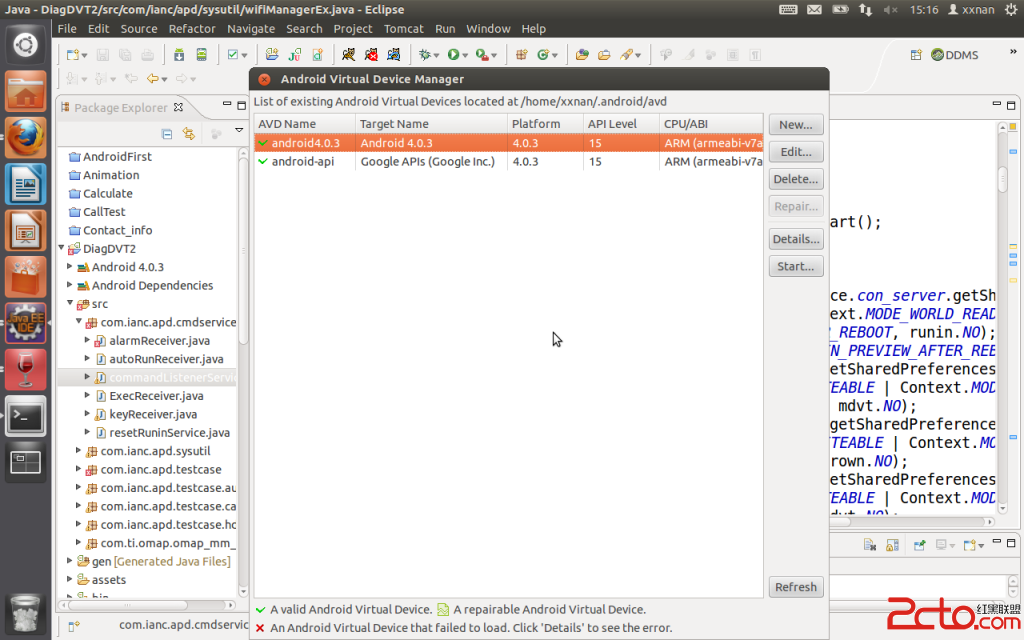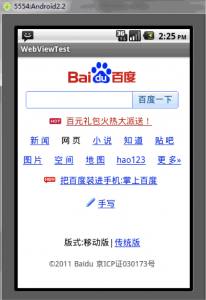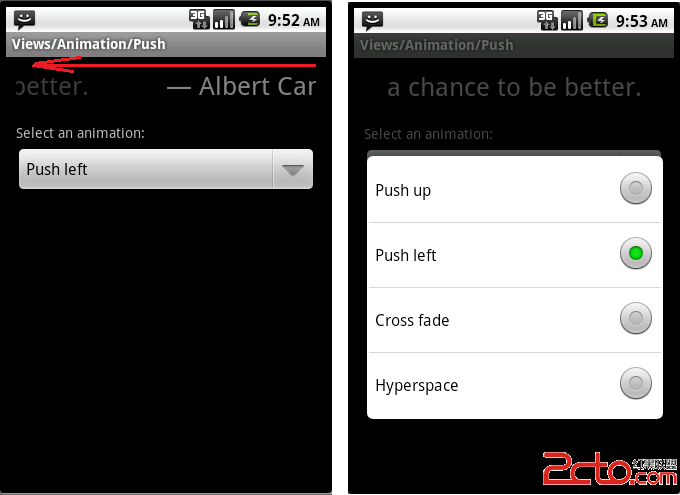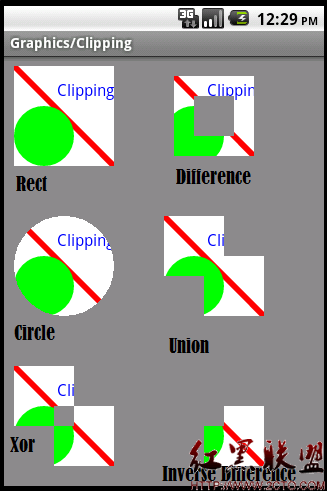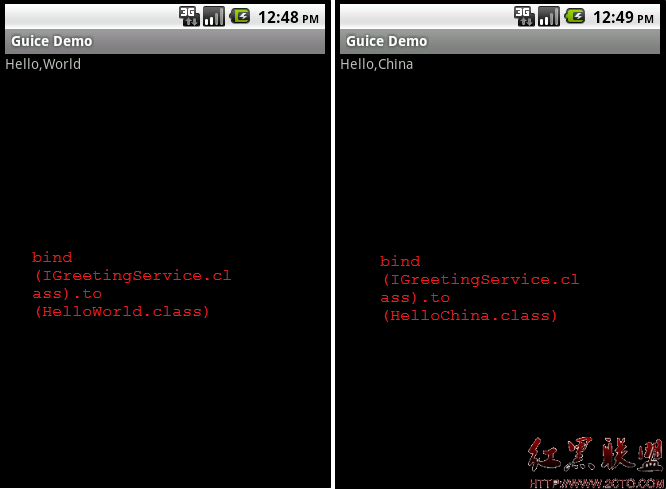Android RoboGuice使用指南(15):Inject Context
在Android应用程序中,很多地方需要引用到Context对象(Activity,Application,Service等)。Roboguice 使得引用Context对象变得非常容易。
可以参见下面例子,这里定义一个不在Activity中的类ContextInfo,需要引用Context对象:
[java] class ContextInfo{
final Context context;
@Inject
ContextInfo(Context context){
this.context=context;
}
String getPackageName(){
return context.getApplicationInfo().packageName;
}
}
class ContextInfo{
final Context context;
@Inject
ContextInfo(Context context){
this.context=context;
}
String getPackageName(){
return context.getApplicationInfo().packageName;
}
}
需要应用Context对象时,使用@Inject 标记,Roboguice会自动注入所需Context对象。
定义一个InjectContextDemo,使用一个TextView来显示ContextInfo的getPackageName内容。
[java] public class InjectContextDemo extends RoboActivity {
@InjectView (R.id.textview) TextView textView;
@Inject ContextInfo contextInfo;
@Override
public void onCreate(Bundle savedInstanceState) {
super.onCreate(savedInstanceState);
setContentView(R.layout.injectcontext);
textView.setText(contextInfo.getPackageName());
}
}
public class InjectContextDemo extends RoboActivity {
@InjectView (R.id.textview) TextView textView;
@Inject ContextInfo contextInfo;
@Override
public void onCreate(Bundle savedInstanceState) {
super.onCreate(savedInstanceState);
setContentView(R.layout.injectcontext);
textView.setText(contextInfo.getPackageName());
}
}
在InjectContextDemo中定义一个InjectContextDemo,也使用@Inject 通知Roboguice自动创建它的一个实例。Roboguice在创建这个对象时,调用其Injectable 构造函数(参见Android RoboGuice 使用指南(10): Just-in-time Bindingshttp://www.zzzyk.com/kf/201205/130101.html ),自动传入Context对象。

如果需要应用Application对象,可以将构造函数改为
[java] @Inject
ContextInfo(RoboguiceDemoApplication context){
this.context=context;
}
@Inject
ContextInfo(RoboguiceDemoApplication context){
this.context=context;
}
或引用Activity
[java] @Inject
ContextInfo(Activity context){
this.context=context;
}
@Inject
ContextInfo(Activity context){
this.context=context;
}
本例下载:/2012/0507/20120507110106855.zip
摘自 引路蜂移动软件
补充:移动开发 , Android ,